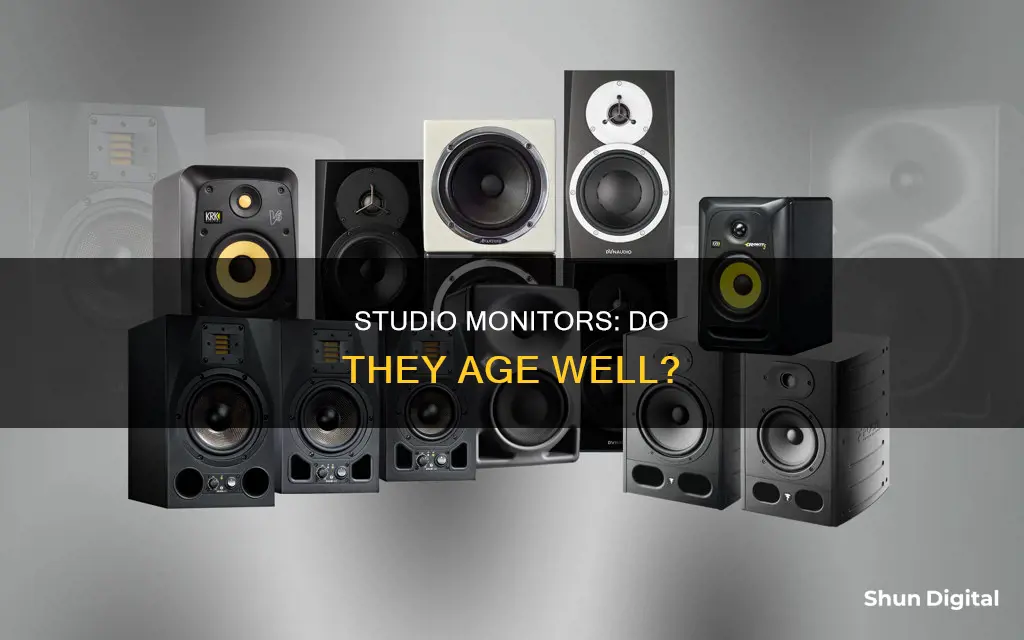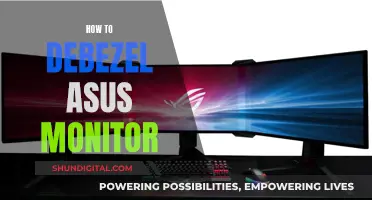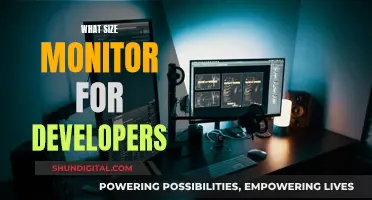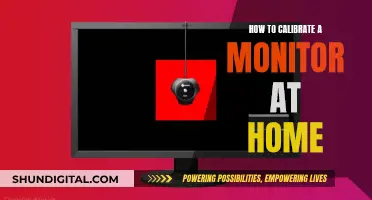
Studio monitors are an important part of any recording studio, but do they wear out? On average, studio monitors last between 5 to 10 years, but they can last up to 15 years or more with proper care and maintenance. Usage is the main factor that affects the lifespan of studio monitors, as the various moving parts will wear out and break down over time. Environmental factors, such as temperature and air quality, can also impact their longevity.
| Characteristics | Values |
|---|---|
| Lifespan | 5-10 years on average; up to 15 years or more with proper maintenance |
| Factors affecting lifespan | Usage, environment, sensitivity of parts, build materials, power source, temperature, transportation, dirtiness, maintenance, and replacement of parts |
| Ways to prolong lifespan | Letting monitors rest, optimal storage environment, proper handling during transportation, regular cleaning, and timely maintenance |
What You'll Learn

Studio monitors last between 5-10 years on average
Studio monitors are a crucial component of any recording studio, be it for professional or personal use. They play a vital role in helping musicians bring out the best in their music. While these monitors are built to last, they do have a finite lifespan, and understanding how long they typically last is essential for studio owners and musicians alike.
On average, studio monitors have a lifespan of around 5 to 10 years. This duration can vary depending on several factors, including usage patterns and environmental conditions. For instance, if you use your studio monitors extensively every day, the various moving parts, such as the cone and internal amp, will wear out faster, leading to a shorter lifespan. Additionally, keeping them in a warm environment or exposing them to direct sunlight can cause the internal components to deteriorate due to the excess heat produced.
However, with proper care and maintenance, you can extend the lifespan of your studio monitors beyond this average range. Taking steps such as regular cleaning, ensuring optimal environmental conditions, and avoiding excessive volume levels can help prolong their lifespan. Some studio monitors, especially those made with high-quality materials and proper maintenance, can last for over a decade, with some even reaching 15 years or more.
It is worth noting that the build quality and materials used in studio monitors also play a role in their longevity. Solid wood cabinets tend to be more durable than plastic ones, and the type of surround material used (cloth, rubber, or foam) can also impact their lifespan. Additionally, active monitor speakers with built-in amplification systems often have longer lifespans than passive speakers, which require external amplifiers.
In summary, studio monitors are a significant investment, and by understanding the average lifespan of 5 to 10 years, you can make informed decisions about their usage, care, and potential replacement to ensure you get the most out of your equipment.
Removing the Red Target Symbol from Your AOC Monitor
You may want to see also

Passive speakers tend to last longer than active speakers
Studio monitors are an important part of any recording studio, and some people even use them for daily listening. On average, they usually last somewhere between 5 to 10 years, depending on how often they are used and certain environmental factors that can affect their longevity. However, with proper care, studio monitors can last for more than ten years or even 15 years.
Passive speakers, such as the KEF R3 Meta, B&W 606 S2 Anniversary Edition, and Wharfedale Diamond 12.3, offer customization options and are ideal for those who like to tweak their sound setup. They provide the flexibility to mix and match components, making them a good choice for professionals who need a scalable and versatile sound system. Additionally, passive speakers have more space inside the housing, allowing for larger drivers and more accurate sound reproduction.
On the other hand, active speakers offer a host of advantages, including better control over the signal and reduced losses and distortion compared to passive speakers. The integration of power amplification optimizes the performance for specific drive units, and the shorter cable length between the amplification and speaker reduces potential distortion or loss caused by wires.
While active speakers have their benefits, they also have some limitations. They are often more expensive due to the hidden electronics, and the sound performance may not always meet expectations. The design limits the amount of upgrading, as individual components cannot be easily swapped out.
In summary, passive speakers tend to last longer than active speakers due to the absence of a built-in power source, which can generate heat and impact the longevity of active speakers. However, modern speakers with good heat regulation have minimized this difference, and both types of speakers can offer durable options for different use cases.
Monitors: Choosing the Right Screen Size for You
You may want to see also

Foam is the least durable material for studio monitors
Studio monitors are an essential component of any recording studio, whether professional or personal, and are even used for daily listening by some. On average, they last between 5 to 10 years, depending on usage and environmental factors. While some believe that studio monitors can last for more than a decade or even 15 years with proper care, this may only be true for those who know how to take care of their equipment properly.
One of the main factors affecting the longevity of studio monitors is the type of material used in their construction. Foam, a common material used in speakers, is particularly susceptible to degradation and is the least durable material for studio monitors. When the foam surrounding the woofers starts to break down, it exposes other parts of the speaker, particularly the voice coil, to damage, shortening the speaker's lifespan.
Rubber is the second least durable material, while cloth is the most long-lasting option for studio monitor construction. The use of foam instead of more durable materials can lead to premature failure of studio monitors, requiring repair or replacement.
To maximise the lifespan of studio monitors, it is important to let them rest and turn them off when not in use. Studio monitors generate a significant amount of heat, which can damage the internal components over time. Additionally, keeping studio monitors in a suitable environment, away from direct heat sources and sunlight, is crucial. Transporting studio monitors safely and properly is also essential, as they can be damaged by bumps and impacts during transportation.
Mounting Your MacBook: Enhancing Display with an LCD Monitor
You may want to see also

Heat and sunlight can damage studio monitors
Studio monitors are susceptible to damage from heat and sunlight. Heat can shorten the lifespan of studio monitors, and sunlight can generate heat when it hits the monitors.
Heat is a significant factor in the deterioration of studio monitors. The electronic components within studio monitors are designed to withstand a certain amount of heat generated through regular use. However, excessive heat can cause damage. When studio monitors are exposed to a warm environment, they can get hotter than normal, and the resulting high temperatures can be detrimental to the internal components.
The impact of heat on studio monitors is twofold. Firstly, the drivers and voice coils in the amplifier can struggle to dissipate the excess heat, leading to potential problems. Secondly, the heat can cause damage to the internal components, such as the cone and the internal amp, which are crucial for producing sound. As these parts wear down, the quality of the sound produced will deteriorate, indicating that the studio monitors are reaching the end of their lifespan.
Sunlight can also pose a threat to studio monitors. Direct sunlight can generate heat, and when sunlight hits the back of a monitor, it can make the plastic case uncomfortably hot. This heat may damage the electronics inside. Additionally, sunlight can cause background light issues, making it difficult for users to see details on the screen. To address this, users may need to increase the screen brightness, which can further contribute to the device running hot and shortening its lifespan.
To prevent heat damage from sunlight, it is recommended to keep studio monitors away from direct sunlight and heat sources. By maintaining optimal environmental conditions, users can help ensure the longevity of their studio monitors. Proper handling during transportation is also crucial, as bumps and heavy objects placed on top of the monitors can cause incremental damage over time.
Best Places to Buy Alienware Monitors
You may want to see also

Routine maintenance can extend the lifespan of studio monitors
Studio monitors are a crucial component of any recording studio, be it a professional or personal setup. They play a vital role in producing, editing, and recording music with precise audio reproduction. While these monitors are built to last, their lifespan depends on several factors, including usage, environment, and maintenance. Routine maintenance plays a pivotal role in extending the lifespan of studio monitors, ensuring they deliver optimal performance for many years. Here are some essential care tips to keep your studio monitors in prime condition:
Let Them Rest
Studio monitors, especially powered ones, generate significant heat during operation. This heat can degrade the internal components over time, reducing the lifespan of the monitors. It is crucial to turn them off when not in use and let them rest. Avoid leaving them on idle or all the time, as this can cause unnecessary wear and tear on the internal electronics.
Optimal Environment
The environment in which studio monitors are placed has a substantial impact on their longevity. Keep them away from direct heat sources and direct sunlight to prevent overheating. Ensure the room has good air quality, as certain gases and chemicals in the air can deteriorate the materials used in the monitors, especially the rubber foam surrounding the speakers. Maintain a well-ventilated, moderate temperature in the room to provide optimal conditions for your equipment.
Handle with Care
Studio monitors may appear sturdy, but they are delicate pieces of equipment. When transporting them, be extremely careful to avoid bumps and knocks. Cover them with a soft material before moving to protect them from damage. Additionally, ensure that no heavy objects are placed on top of them during transportation. Proper handling will help prevent internal damage and extend their lifespan.
Regular Cleaning
Grime and dust can accumulate on studio monitors over time, affecting both their performance and longevity. Regular cleaning is essential to maintain optimal sound quality and the overall health of the equipment. Use a microfiber cloth to gently wipe down the monitors at least once a month, or more frequently if needed.
Break Them In
Just like a new pair of shoes, studio monitors benefit from a break-in period. When you first get your monitors, play various types of music at a moderate volume for at least 12-24 hours. This process helps improve sound quality and contributes to the long-term durability of the monitors.
By following these routine maintenance tips, you can significantly extend the lifespan of your studio monitors, ensuring they deliver accurate and reliable performance for years to come. Remember, prudent usage and regular care are key to maximizing the longevity of your studio equipment.
Lane Departure Warning: Blind Spot Monitoring Standard?
You may want to see also
Frequently asked questions
Studio monitors typically last between 5 to 10 years, but with proper care and maintenance, they can last up to 15 years or even longer.
The lifespan of studio monitors is influenced by usage, environment, and the sensitivity or quality of parts. Continual use and keeping monitors in a hot environment can drastically reduce their lifespan.
To extend the lifespan of your studio monitors, let them rest by turning them off when not in use, keep them in a cool, well-ventilated, stable environment, and handle them with care when transporting.
When studio monitors start to wear down, the quality of the sound they produce will deteriorate. This can be a sign that they are reaching the end of their lifespan.







